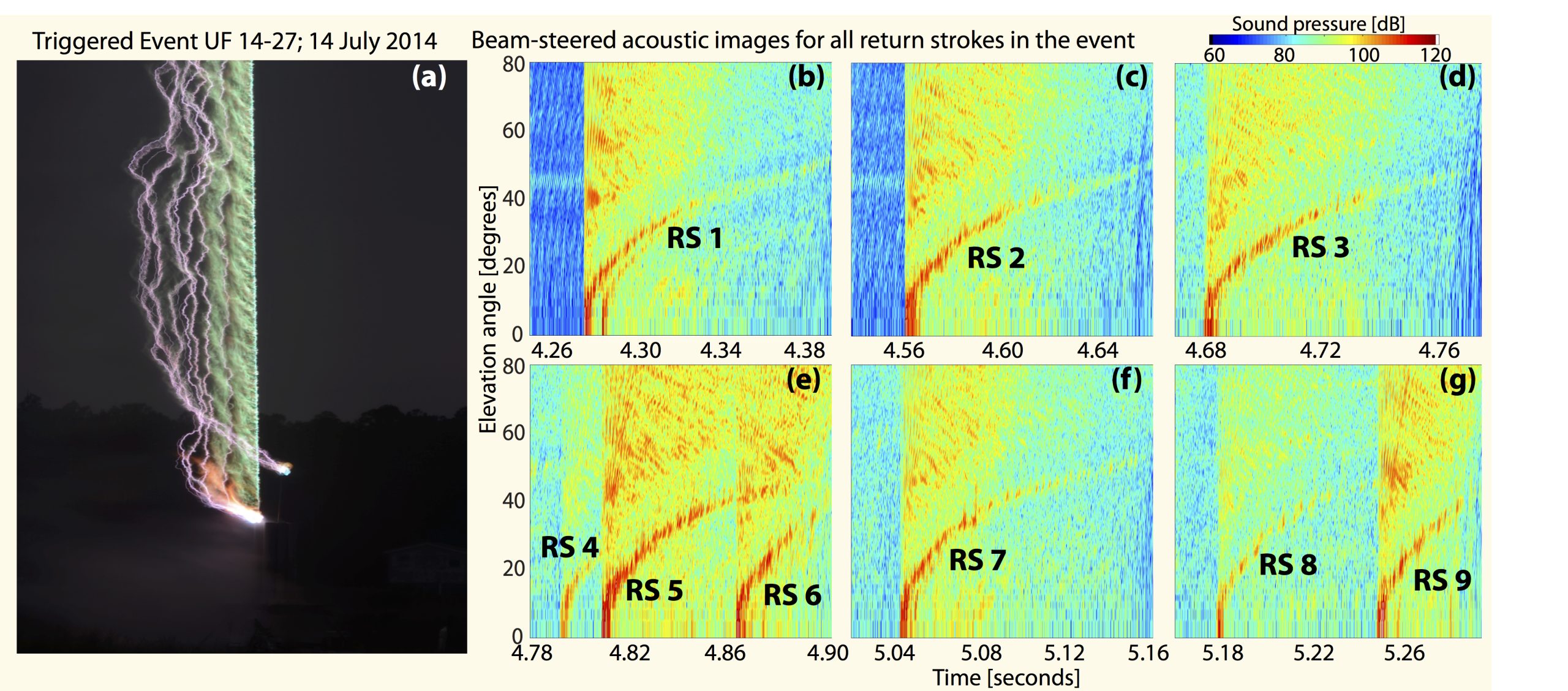For the first time, researchers have captured images that represent thunder. A team from Southwest Research Institute (SwRI) developed a large, sophisticated array of microphones to study thunder’s sound waves. “Lightning strikes the Earth more than 4 million times a day, yet the physics behind this violent process remain poorly understood,” said SwRI research scientist Dr. Maher A. Dayeh. “While we understand the general mechanics of thunder generation, it’s not particularly clear which physical processes of the lightning discharge contribute to the thunder we hear. A listener perceives thunder largely based upon the distance from lightning. From nearby, thunder has a sharp, cracking sound. From farther away, it has a longer-lasting, rumbling nature.”
The experiments were conducted at the International Center for Lightning Research and Testing at the University of Florida, Gainesville, a location known for frequent lightning strikes. Since thunder and lightning are so erratic, the researchers artificially triggered lightning so they could study the strikes with more control. To do this, they launched a small rocket trailing a grounded copper wire into thunderclouds. The copper wire is a conductive channel that creates a predictable path for the scientists to observe. Fifteen microphones lined up near the rocket launch pad captured the acoustic power radiated from the electrostatic charges generated by lightning. Then Dayeh used post-signal processing techniques and directional amplification of the data signals to create an image to represent the sound waves.

At first, Dayeh thought the experiment didn’t work, because the initial images looked random. But when he looked at the different sound frequency bands, Dayeh and his collaborators saw that at higher frequencies, a distinct signature of thunder emerged in the acoustic data. The images were presented at a joint meeting of American and Canadian geophysical societies in Montreal on Wednesday. In the future, researchers can use this technique to learn more about the energetic processes associated with lightning and the origins of thunder.
